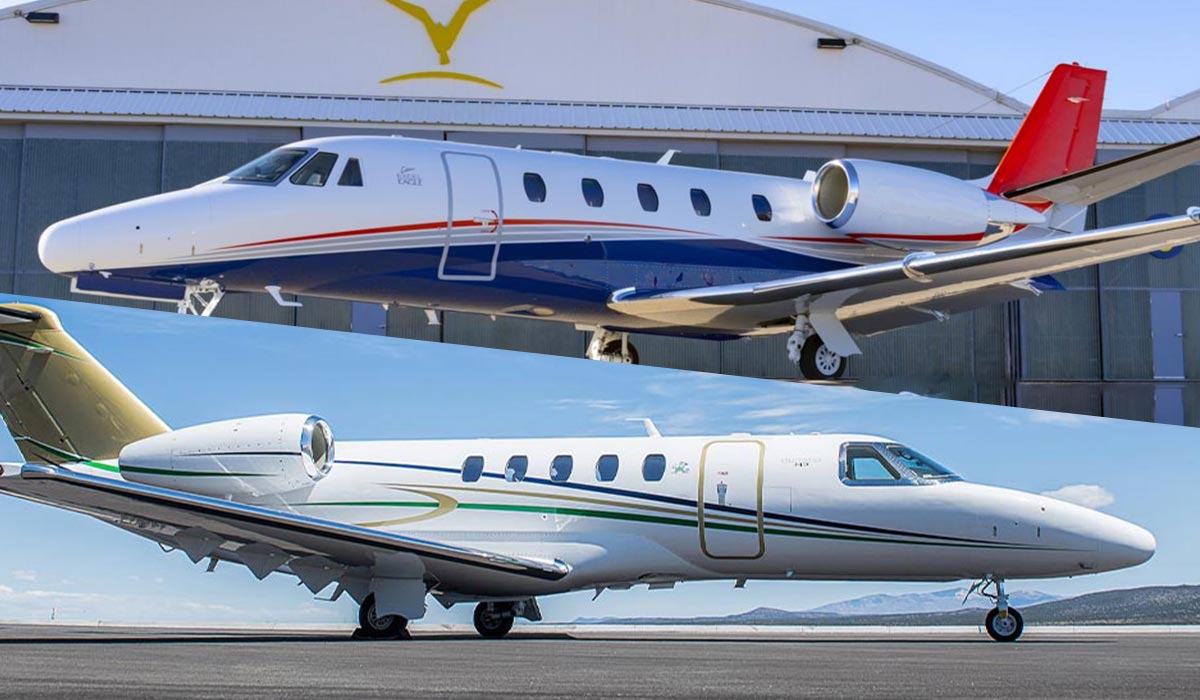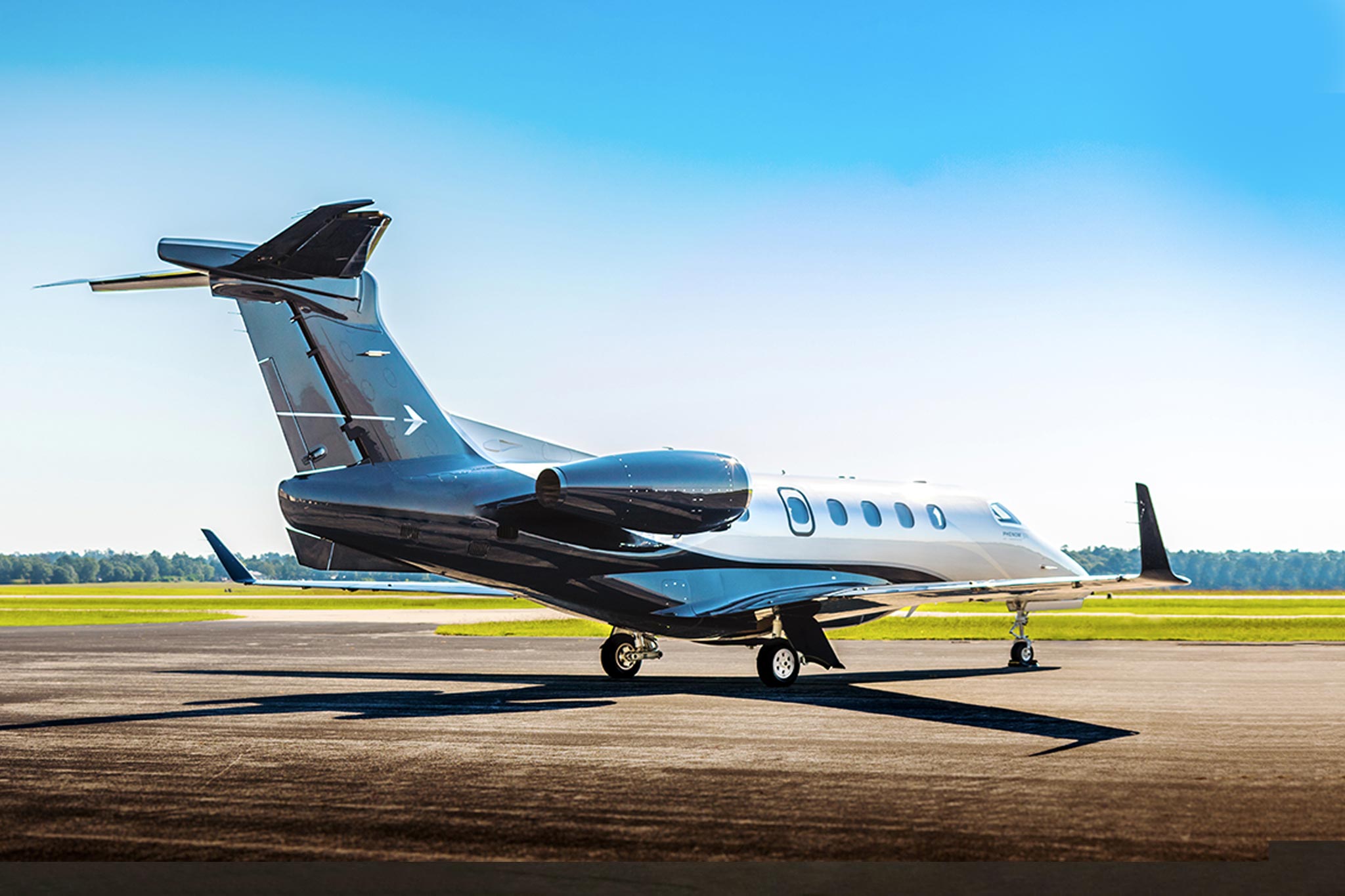
Comparing the Cessna Citation CJ4 and Citation Excel
Date
March 21, 2024Author
Kyle Delphon, Sales DirectorIn the realm of private jet aviation, the Cessna Citation series stands as a benchmark for performance, comfort, and reliability. Two prominent models within this series, the Cessna Citation CJ4 and the Citation Excel, are not often compared for their respective attributes but have more crossover than expected when looked at in-depth. Examining their performance data, cabin dimensions, seating capacity, upgrade options, and pricing can provide valuable insights for potential buyers.
Performance Data:
The Citation CJ4, representing an upgrade from its predecessor, the CJ3, boasts impressive performance metrics. Powered by Williams International FJ44-4A turbofan engines, it achieves a maximum cruise speed of approximately 451 knots (833 km/h) with a range of around 2,165 nautical miles (4,010 kilometers), suitable for mid-range flights. The CJ4 also exhibits superior runway performance, requiring shorter takeoff and landing distances compared to its counterparts.
Conversely, the Citation Excel, equipped with Pratt & Whitney Canada PW545A engines, delivers commendable performance with a maximum cruise speed of approximately 441 knots (816 km/h) and a range of approximately 1,839 nautical miles (3,408 kilometers), making it ideal for shorter to mid-range journeys.
Cabin Size and Seating Capacity:
One notable advantage of the Citation Excel is its spacious and comfortable cabin, which exceeds that of the CJ4. The Citation Excel provides a cabin environment with dimensions of approximately 18.7 feet in length, 5.5 feet in width, and 5.7 feet in height. Capable of accommodating up to 9 passengers comfortably, with the inclusion of a 2-place side-facing divan and a belted seat in the lavatory area, the Excel offers ample space for both passengers and luggage storage, enhancing the overall travel experience.
In comparison, the Citation CJ4 features a slightly smaller cabin measuring 17.3 feet in length, 4.8 feet in width, and 4.9 feet in height. While still spacious, the CJ4 may not offer the same level of comfort and roominess as the Excel, particularly for longer journeys or larger groups of passengers.
Upgrade Options:
One significant factor to consider is the availability of upgrade options for avionics systems. The Citation CJ4 currently features Collins Avionics with limited upgrade options, which may restrict the integration of newer technologies and functionalities into the aircraft’s cockpit.
In contrast, the Citation Excel can benefit from upgrades to its avionics system, notably the Garmin G5000 suite. The Garmin G5000 avionics suite offers advanced features such as touchscreen displays, synthetic vision technology, integrated flight management systems, and improved situational awareness. This upgrade enhances the Excel’s operational capabilities, efficiency, and safety profile, making it a compelling option for buyers seeking modernized avionics solutions.
Pricing Considerations:
The market for both the CJ4 and the Excel has experienced some cooling off recently, with prices showing a downward trend. The Excel, being an older model, generally falls within a more affordable price range, typically ranging from $3.5 million to $5.0 million on average. However, despite its age, the Excel offers buyers the opportunity to invest in upgrades such as new interior fittings, avionics enhancements, and other modern amenities. Through strategic upgrades, an Excel can be transformed to feel almost like new, offering a compelling value proposition for buyers seeking to maximize their investment without compromising on comfort or performance.
In contrast, the CJ4 commands a higher price range, typically ranging from $7.0 million to $10.5 million. While the initial investment may be higher, buyers benefit from the CJ4’s newer technology and potentially lower maintenance costs over time. However, the higher upfront cost may limit some buyers’ accessibility to this model.
As the market stabilizes and 100% Bonus Depreciation is likely to be passed, buyers may find increased confidence in investing in either model. The potential tax benefits coupled with the ability to customize and upgrade the Excel make it an attractive option for budget-conscious buyers who seek a cost-effective solution without sacrificing quality or comfort.
Conclusion:
The choice between the Cessna Citation CJ4 and the Citation Excel ultimately boils down to the specific needs and preferences of the buyer. Each model offers distinct advantages that cater to different priorities and operational requirements.
Because of the CJ4’s ability to be operated in a single pilot configuration, buyers with strict operating budgets and smaller operations may lean towards the CJ4 even with the higher initial acquisition cost. On the other hand, the Citation Excel presents a compelling case for larger operators and buyers focused on cabin comfort, customization/upgrades, and a lower initial acquisition cost.
Ultimately, the decision between the CJ4 and Excel hinges on individual priorities, operational requirements, and budget considerations. Whether prioritizing performance and efficiency with the CJ4 or comfort and customization with the Excel, buyers can find a model that aligns with their specific needs and preferences. By carefully evaluating factors such as performance, cabin amenities, upgrade options, and financial considerations, buyers can make an informed decision and select the jet that perfectly suits your next mission.



